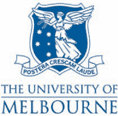The SensorWeb Project: Unifying Sensor Networks and Grid Computing with the World-Wide Web
Introduction
The SensorWeb project aims at developing Open SensorWeb Architecture (OSWA) and implementing standards compliant platform and middleware for integration of sensor networks with emerging distributed computing platforms such as Grids. It confirms to Web Services standard defined by the W3C (World-Wide Web) and SensorML (Sensor Model Language) standard defined by the OpenGeospatial Consortium. This integration of sensor networks with Grid computing brings out dual benefits: (i) sensor networks can off-load heavy processing activities to the Grid and (ii) Grid-based sensor applications can provide advance services for smart-sensing by deploying scenario-specific operators at runtime. Our Open SensorWeb Architecture consists of four layers: sensor fabric layer, core services, user-level services, and applications. Core services are provided by lower-level layer components whereas components at the user-level layer provide tools for creation of applications and management of life-cycle of data captured through sensor networks.
The project primarily aims to develop (a) an interactive development environment, (b) an open and standards-compliant SensorWeb application services middleware, and (c) a coordination language to support the development of sensor applications in various domains including water observation networks, safe road transportation management systems, and Tsunami detection network for the early warning systems.
The OSWA-based platform provides a number of sensor and actuation services, such as:
- sensor notification, collection and observation,
- data collection, aggregation and archiving,
- sensor coordination and data processing,
- faulty sensor data correction & management, and
- sensor configuration and directory services.
Team Members and Collaborators
University of Melbourne - Current:
- Rajkumar Buyya
- Marimuthu Palaniswami
- Tom Kobialka (currely Research Fellow, GRIDS Lab, UniMelb)
- Charity Laplp, PhD student - UniMelb.
- Peng Deng, Research Assistant - UniMelb.
Past Members (involved during 2005-2007):
- Xingchen Chu (MIT Student, 2005).
- Jiye Lin (MIT Student, 2005).
- Chris Leckie
- Rao Kotagiri
- MEDC Students: Jehanzeb Khan, Ronald Siswara Wong, Huan Xie, Hong Xue
External Collaborators:
- Chen-Khong Tham, National University of Singapore
- Bohdan Durnota, Tjurunga, Melbourne.
Publications
- Chen-Khong Tham and Rajkumar Buyya, SensorGrid: Integrating Sensor Networks and Grid Computing, CSI Communications, pages 24-29, Vol.29, No.1, ISSN 0970-647X, Computer Society of India (CSI), Mumbai, India, July 2005.
- Xingchen Chu and Rajkumar Buyya, Service Oriented Sensor Web, Sensor Network and Configuration: Fundamentals, Techniques, Platforms, and Experiments, N. P. Mahalik (ed), Springer-Verlag, Germany, 2007.
- Xingchen Chu, Tom Kobialka, Bohdan Durnota, and Rajkumar Buyya, Open Sensor Web Architecture: Core Services,, Proceedings of the 4th International Conference on Intel ligent Sensing and Information Processing (ICISIP 2006, IEEE Press, Piscataway, New Jersey, USA, ISBN 1-4244- 0611-0, 98-103pp), Dec. 15-18, 2006, Bangalore, India.
- Tom Kobialka, Rajkumar Buyya, Christopher Leckie, and Rao Kotagiri, A SensorWeb Middleware with Stateful Services for Heterogeneous Sensor Networks, Proceedings of the 3rd International Conference on Intelligent Sensors, Sensor Networks and Information Processing (ISSNIP 2007, IEEE Press, Piscataway, New Jersey, USA), Dec. 3-6, 2007, Melbourne, Australia.
- Tomasz Kobialka, Rajkumar Buyya, Peng Deng, Lars Kulik, Marimuthu Palaniswami, Sensor Web: Integration of Sensor Networks with Web and Cyber Infrastructure, Handbook of Research on Developments and Trends in Wireless Sensor Networks: From Principle to Practice, H. Jin and W. Jiang (eds), ISBN: 978-161-520-701-5, IGI Global, USA, Feb. 2010.
Student Reports
- XingChen Chu, Open Sensor Web Architecture: Core Services, Master of IT - Minor Thesis, University of Melbourne, Australia, December 2005.
- Jiye Lin, Open Sensor Web Architecture: Database Services, Master of IT - Minor Thesis, University of Melbourne, Australia, December 2005.
- Huan Xie and Hong Xue, The Cache Mechanism for NICTA Open Sensor Web Architecture, MEDC Project Report, University of Melbourne, Australia, November 2007.
Presentation/Exhibition
- Rajkumar Buyya, Xingchen Chu and Jiye Lin, Open Sensor Web and Sensor Grid Architecture Integration, Poster Presentation, IEEE International Symposium on E-Science and Grid Computing (E-Science 2005), Melbourne, Australia, Dec. 2005.
- SensorGrid: A new Cyberinfrastructure Integrating Sensor Network and Grid Computing for e-Science Applications, National Workshop on Wireless Sensor Networks, Hyderbad, India, Dec. 29. 2005.
- Rajkumar Buyya and Xingchen Chu, Service Oriented Sensor Web
Software
- Latest Version (May 11, 2009): SensorWeb Core 3.1 The code is released under GPL license. However, all library interfaces are released under LGPL so that you can use our SensorWeb code without the need of releasing source code of your applications.
- SensorWeb 3.1 Documents: (1) Release Notes, (2) Cookbook, (3) Installation Guide
- Latest Version (March 2009): SensorWeb Core 3.0 The code is released under GPL license. However, all library interfaces are released under LGPL so that you can use our SensorWeb code without the need of releasing source code of your applications.
- SensorWeb 3.0 Documents: (1) Release Notes, (2) Cookbook, (3) Installation Guide
- Old Version:(June 2008): SensorWeb Core 2.0 The code is released under GPL license. However, all library interfaces are released under LGPL so that you can use our SensorWeb code without the need of releasing source code of your applications.
- SensorWeb 2.0 Documents: (1) Release Notes, (2) Cookbook, (3) Installation Guide
- OLD version (2005/2006): SensorWeb Core 1.0 The code is released under GPL license. However, all library interfaces are released under LGPL so that you can use our SensorWeb code without the need of releasing source code of your applications.
Useful Pointers
- Singapore SensorGrid Project
- Open GIS SensorWeb
- TinyOS
- TinyDB
- TOSSIM - Simulating TinyOS Networks
- NOSA Project, 2006-2007
- Melbourne Sensor Networks Subject





